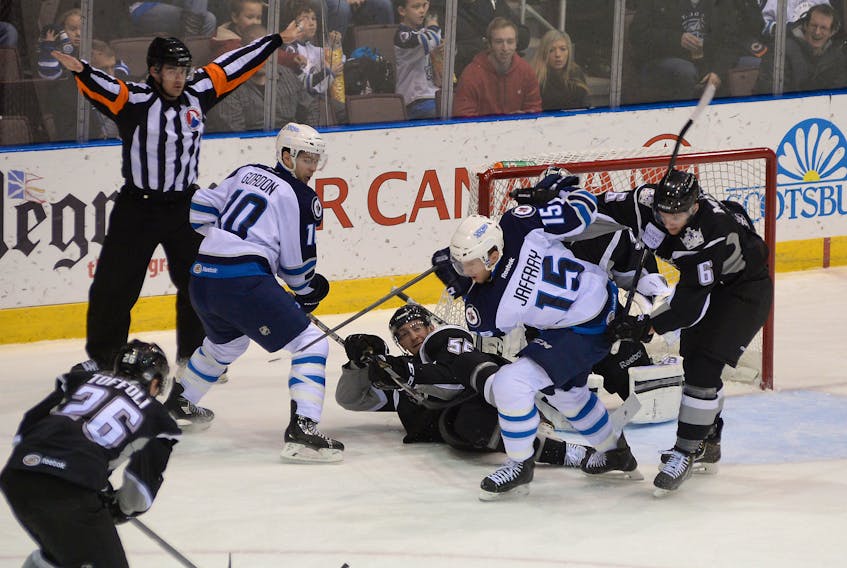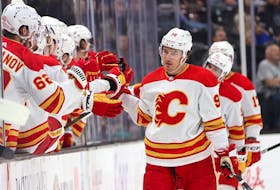It’s not a new question. In fact, it’s been asked ever since the idea of a professional hockey team in St. John’s was broached three decades ago.
And as it is asked, you can imagine a finger being pointed at a map of North America, specifically at its northeastern edges.
“Won’t the cost of travel doom this hockey team? After all, weren’t high travel costs the reason AHL teams (Maple Leafs and IceCaps) left St. John’s?”
In this instance, the “hockey team” is the Newfoundland Growlers, set to begin play in the ECHL this fall.

And while the first part of the query might be seen as legitimate, the second is based on a widely-held misconception.
The Toronto Maple Leafs, Winnipeg Jets and Montreal Canadiens, who owned the American Hockey League franchises that played out of St. John’s for two decades, didn’t pay the travel costs. They were covered by local operators who basically leased the AHL operations of the respective NHL organizations; the City of St. John’s/SJSE for the AHL Leafs, Danny Williams with the Jets and Canadiens for the IceCaps.
In each case — the Leafs to Toronto (Marlies), the Jets to Winnipeg (Manitoba Moose) and the Canadiens to Laval, Que. (Rocket) — they relocated their farm teams almost exclusively for operational reasons as part of a trend where NHL teams want to keep their AHL farm teams close at hand.
In fact, it could be contended all three NHL organizations have higher AHL travel costs these days as opposed to when they were in St. John’s since they now directly operate their AHL clubs and don’t have another party responsible for the team’s transportation.
Travel costs have been a factor for professional hockey teams in St. John’s since 1991, when the American Hockey League arrived, and have been built into operational budgets of AHL teams through 20 seasons.
It will be the same for Growlers.
But there is no doubt those costs are significant.
Every one of the Growlers’ seven road trips in 2018-19 will involve flights to and from Toronto, with a few swings involving additional legs (to Boston/Philadelphia, i.e.). As well, the team will have to cover the costs of more hotel-room nights and player per diems than most, if not all, of the ECHL’s others 26 clubs.
What’s more, there is the matter of a travel subsidy for visiting teams.
Part of the requirement for the AHL entry of the St. John’s Maple Leafs and St. John’s subsequent re-entry into the league with the IceCaps was that the travel costs of visiting teams would be covered. The Growlers had to agree to the same requirement to gain entry into the ECHL.
That subsidy involves suppling airline tickets. Expect the Growlers to pay for about two dozen round-trip tickets between Toronto and St. John’s for each visiting clubs (almost all trips related to the ECHL and St. John’s will come through Toronto). Since there will be 17 different visits by teams, that adds up to around 400 round-trip tickets to be purchased.
However, we have to assume the Growlers owners have a business plan they believe will absorb these travel costs.
That plan almost certainly involves counting on a level of fan support similar to that enjoyed by the IceCaps, who, were in the top half of average attendance in the AHL during most of their six-year existence. The one exception was 2016-17, a lame-duck season that began with the Canadiens having already announced they would move their farm-team operations to Laval the following season.
Overall, during those half-dozen years, the average attendance for AHL games at Mile One was 5,678, and that includes that ’16-17 season, when it dipped to 4,103.
According to the ECHL website, average attendance in the league this past season was 4,424, ranging from a high of 7,724 (Fort Wayne) to a low of 2,390 (Wheeling).
The big question to be answered is whether, after two decades of teams playing in the top level of minor league hockey, hockey fans here will accept a brand in a tier below the AHL ,and how that might translate into attendance, even when ECHL ticket prices will be lower than those for AHL games at Mile One.
The Growlers’ owners obviously believe they will.
[email protected]
Twitter: @telybrendan









